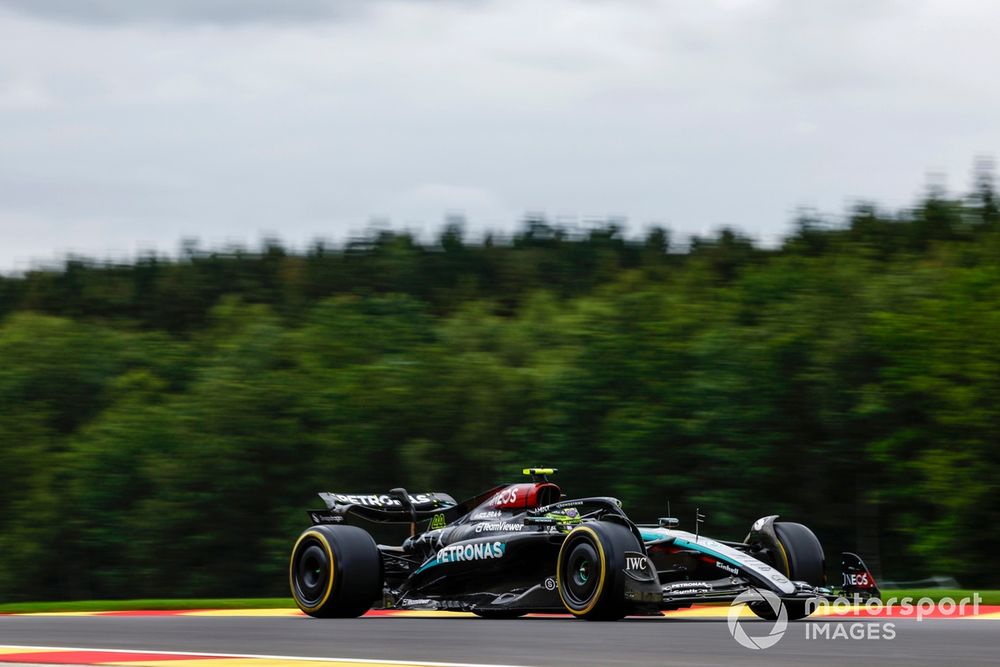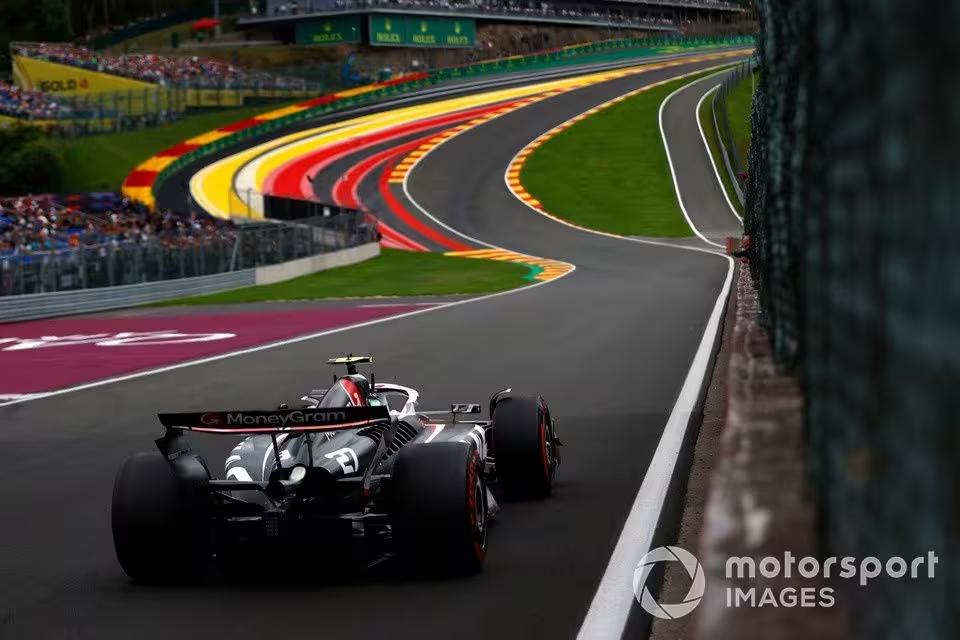A partial resurfacing of the Formula 1 circuit at Spa-Francorchamps has triggered headaches for drivers and teams in working out how best to attack the Belgian Grand Prix.
Work was completed last month on resurfacing 3.5km of the Spa circuit, which is around half its length, in three areas.
These were from Blanchimont to Eau Rouge, from the start of the Kemmel straight to Bruxelles and from the Campus bend to Paul Frere.
The works were aimed at improving safety conditions at the track with a higher grip surface, while also getting rid of some of the bumps from older sections of asphalt.
While the improvements have done exactly what was hoped for, they have also opened up a unique scenario that drivers and teams now have to overcome.
The changes have given the circuit a Jekyll-and-Hyde character – where some parts of it offer super high grip and are very abrasive, while other sections are the opposite.
Nico Hulkenberg, Haas VF-24
Photo by: Steven Tee / Motorsport Images
This not only makes the feel of the track different, but it also serves to alter car and tyre characteristics as the balance shifts.
Based on dry running so far this weekend, it has opened up a scenario where it is incredibly hard to manage as it has ramped up tyre degradation.
As Mercedes driver George Russell explained: “I think you have got three quarters of the track which is probably the smoothest of the season, and the other quarter is the most abrasive of the season.
“You are in two totally different windows, and that combination of the two is what has caused a lot of damage to the tyres.
“It is the same for everyone, but I don’t think anyone expected this sort of degradation.”
Pirelli’s head of F1 and car racing Mario Isola said that the data collected from running so far showed the new surface was causing an increase in tyre wear.
“It is smoother if you look at the roughness, but it is generating more grip,” he said.

Lewis Hamilton, Mercedes F1 W15
Photo by: Zak Mauger / Motorsport Images
“Part of this grip is probably adhesive grip, but the result is that is putting more stress on the tyres, and this increases the overheating and also the graining, especially on the front left.”
The end result of the new surface is that the Belgian GP has shifted from what was a marginal one/two-stopper, to a nailed on two-stopper – with three stops even now on the cards.
Isola added: “Last year, it was a two-stop race for the…
Click Here to Read the Full Original Article at Motorsport.com – Formula 1 – Stories…

